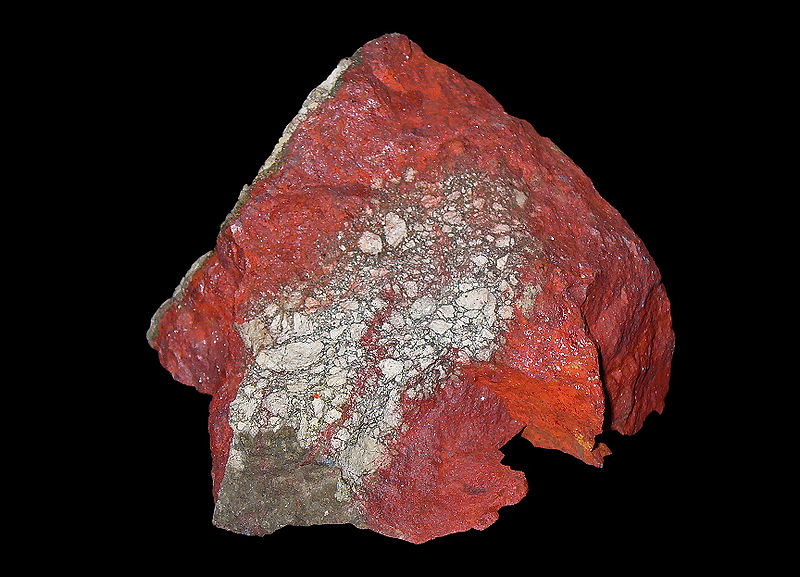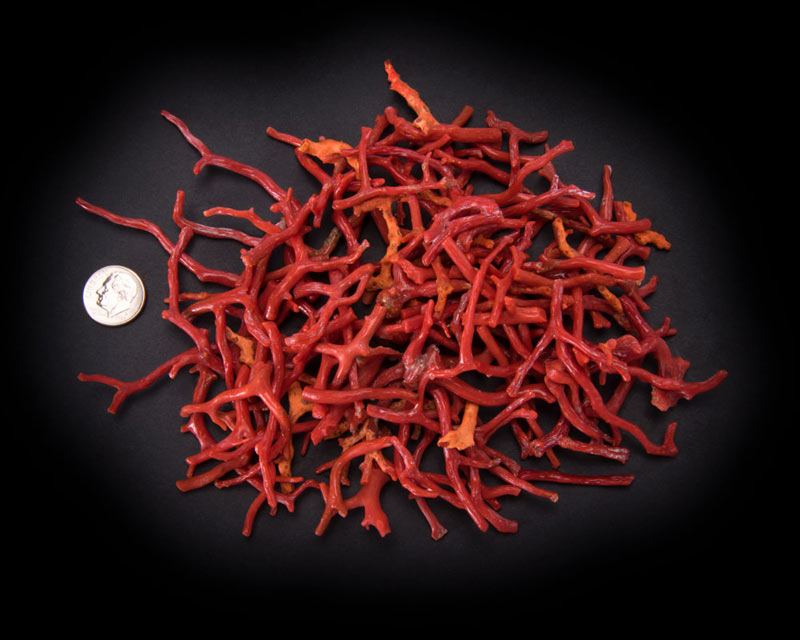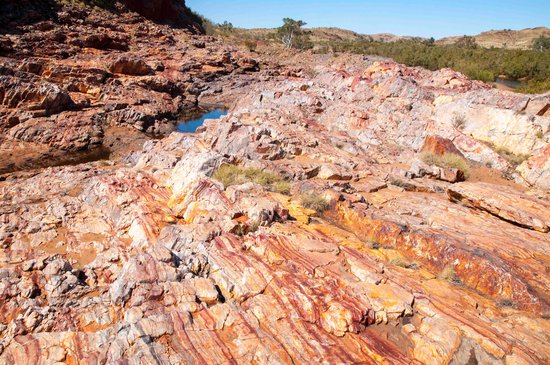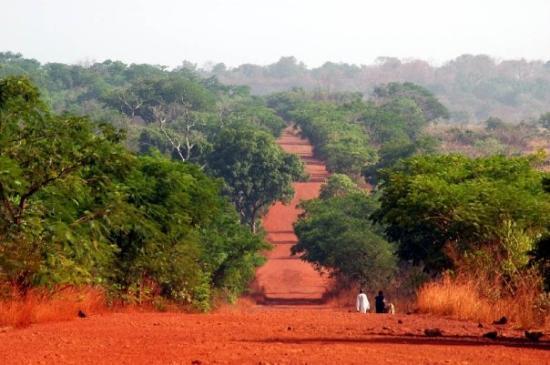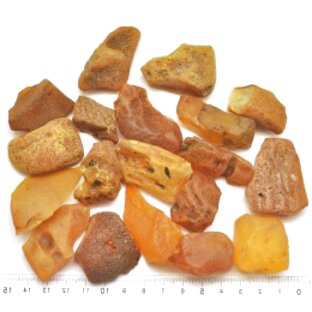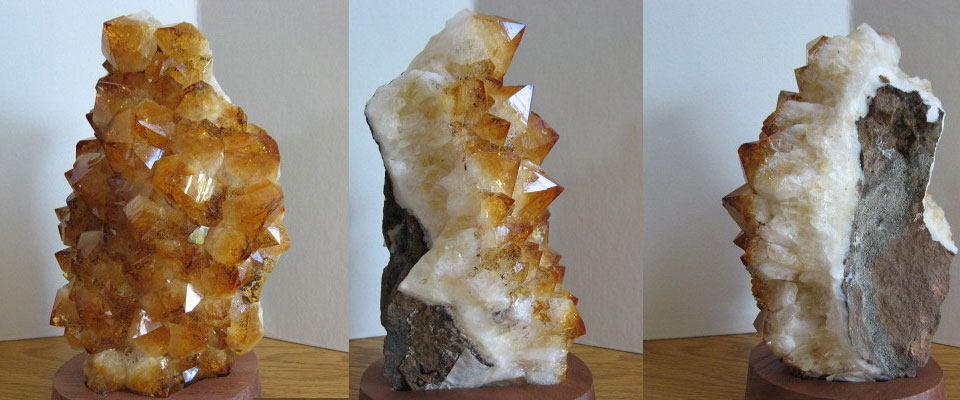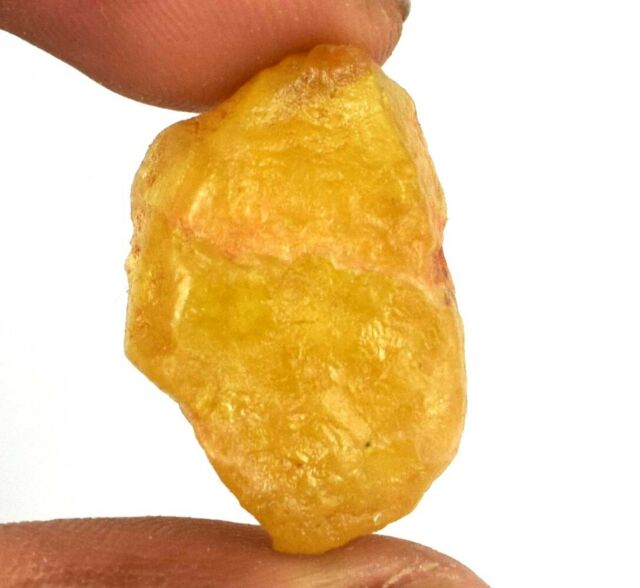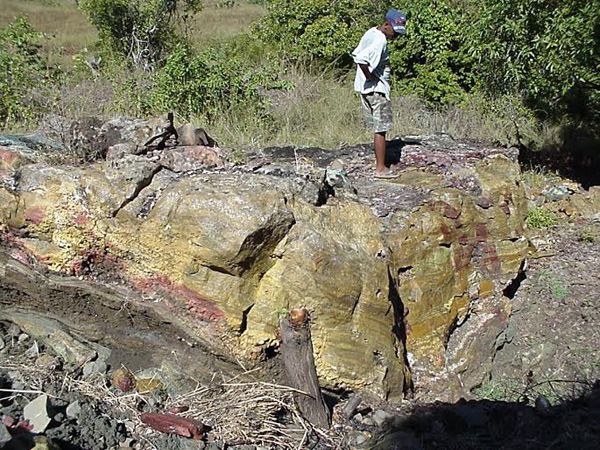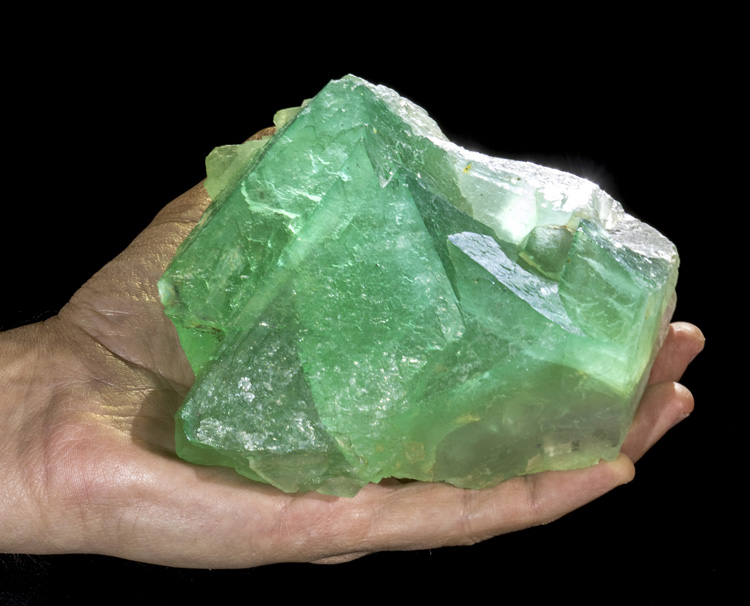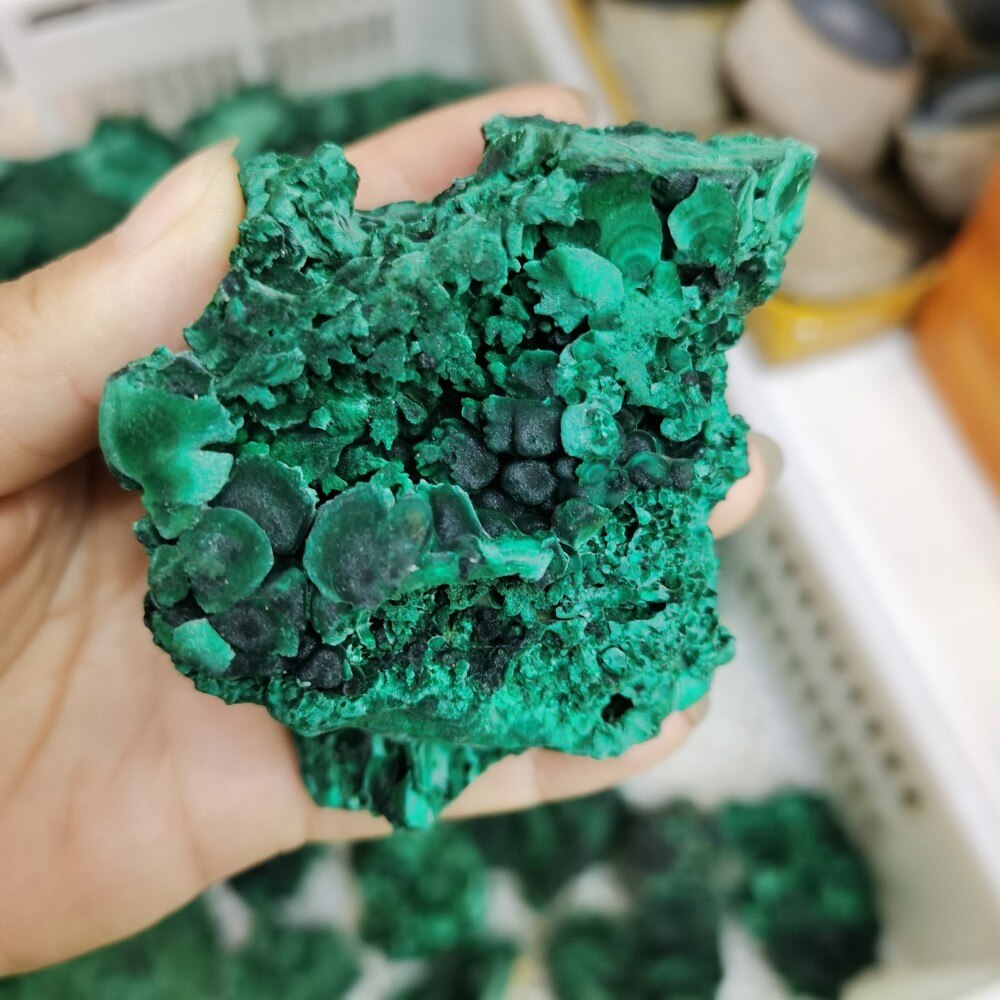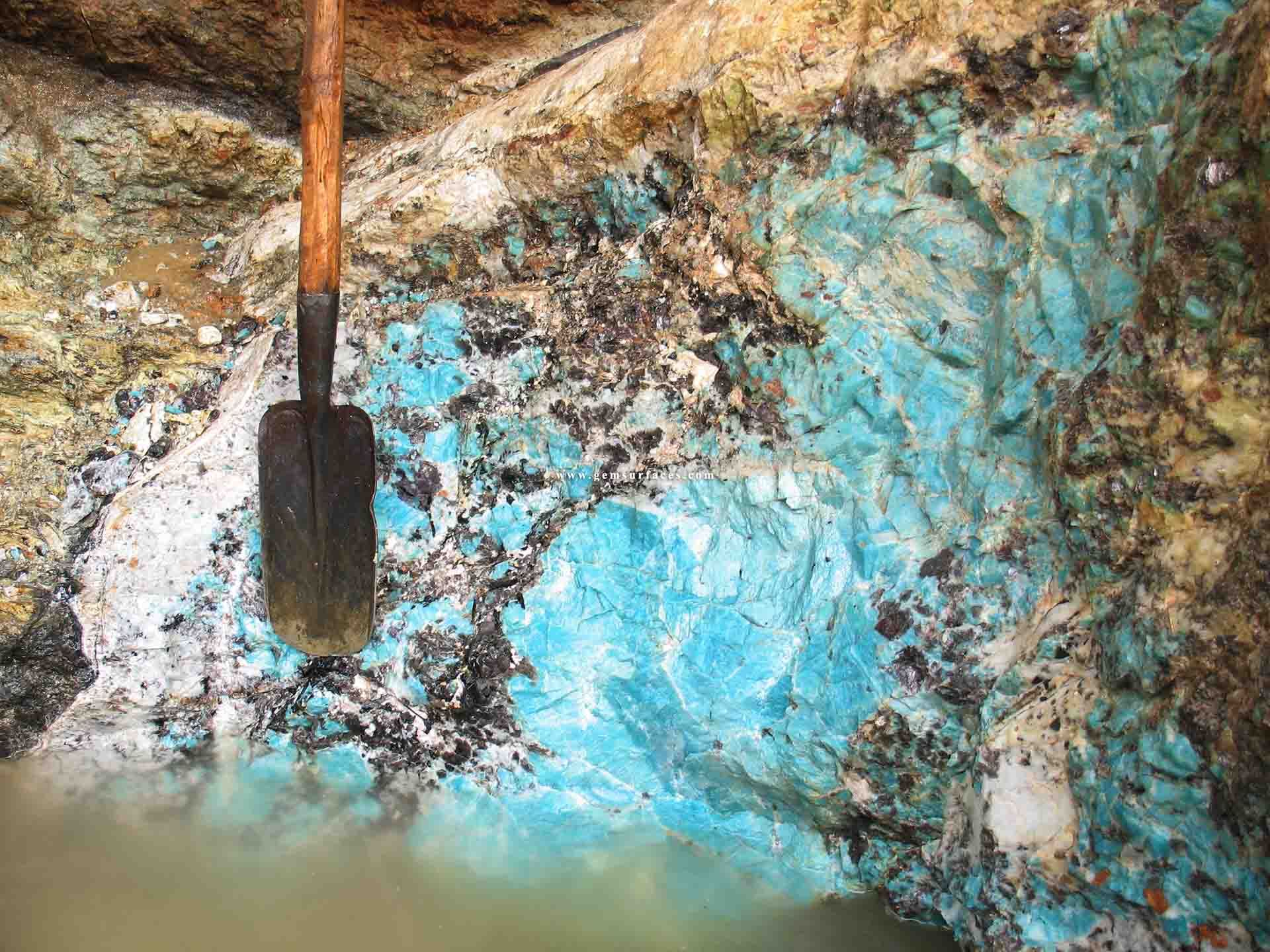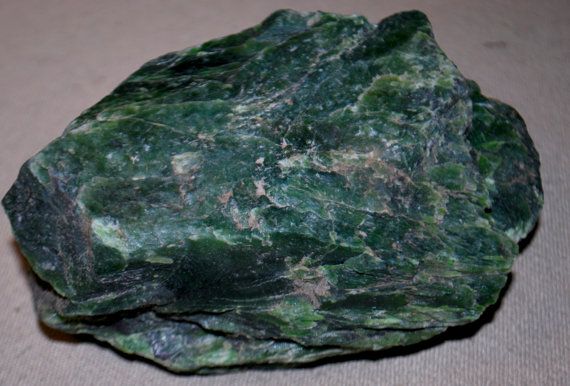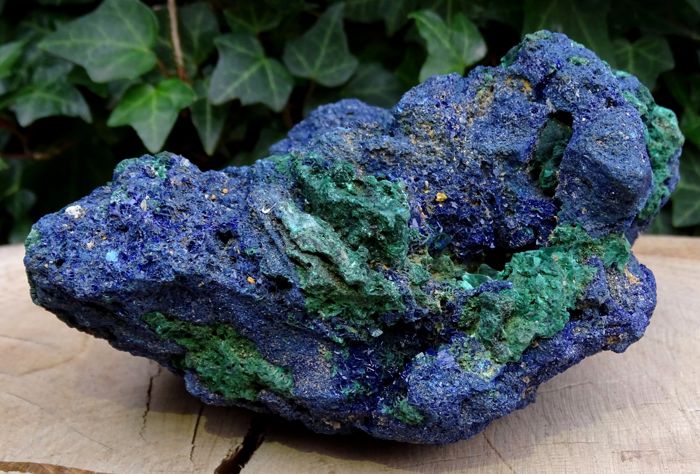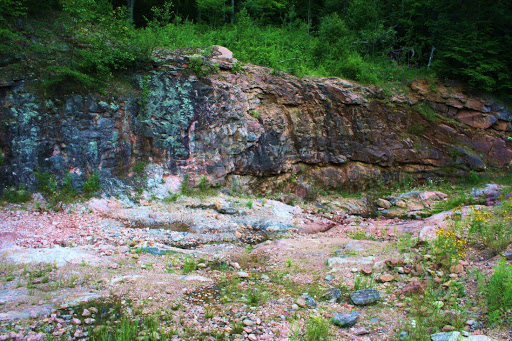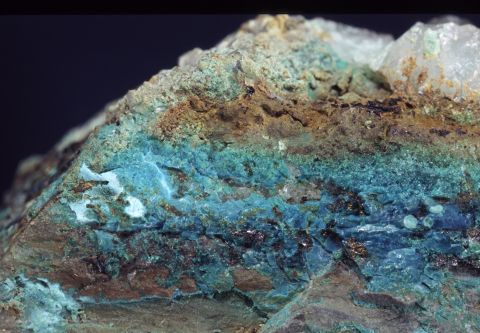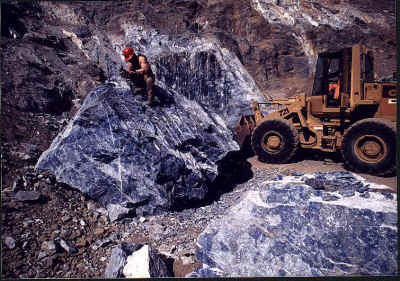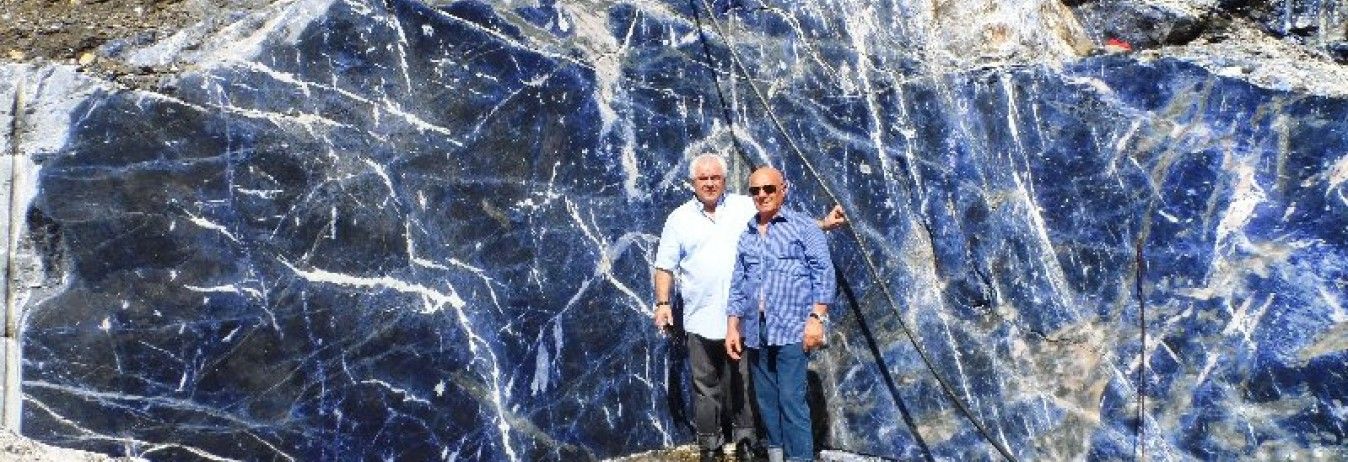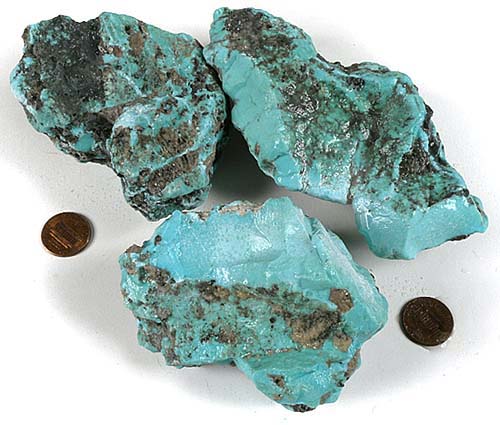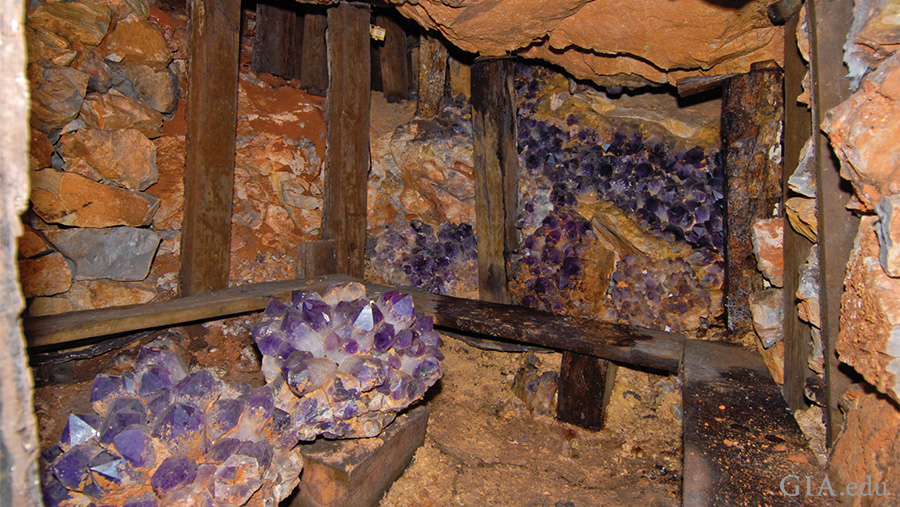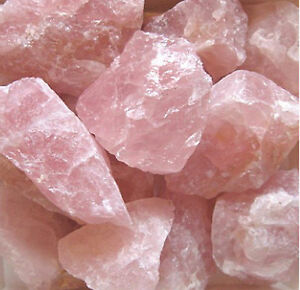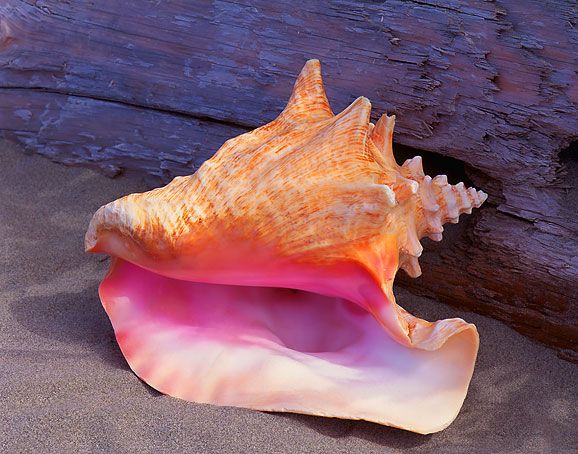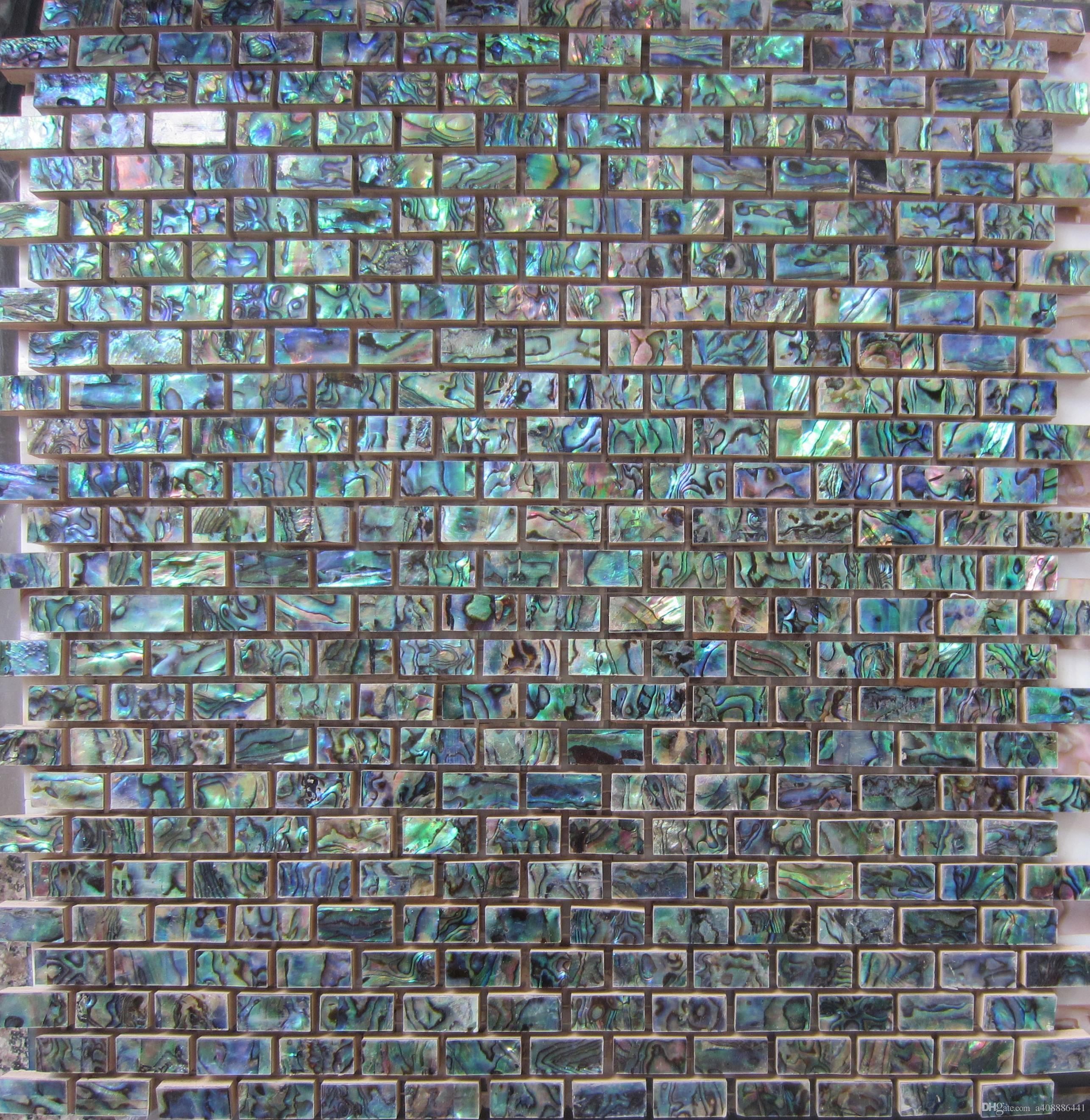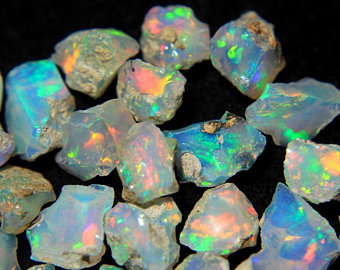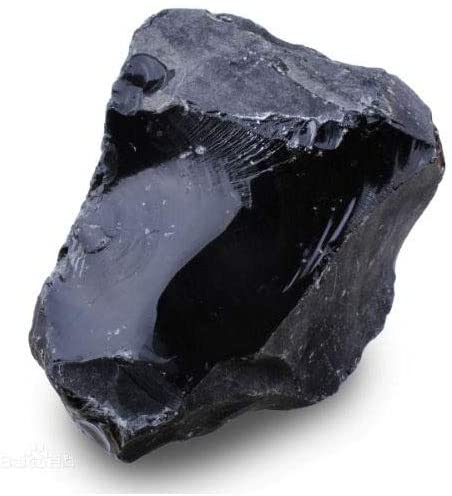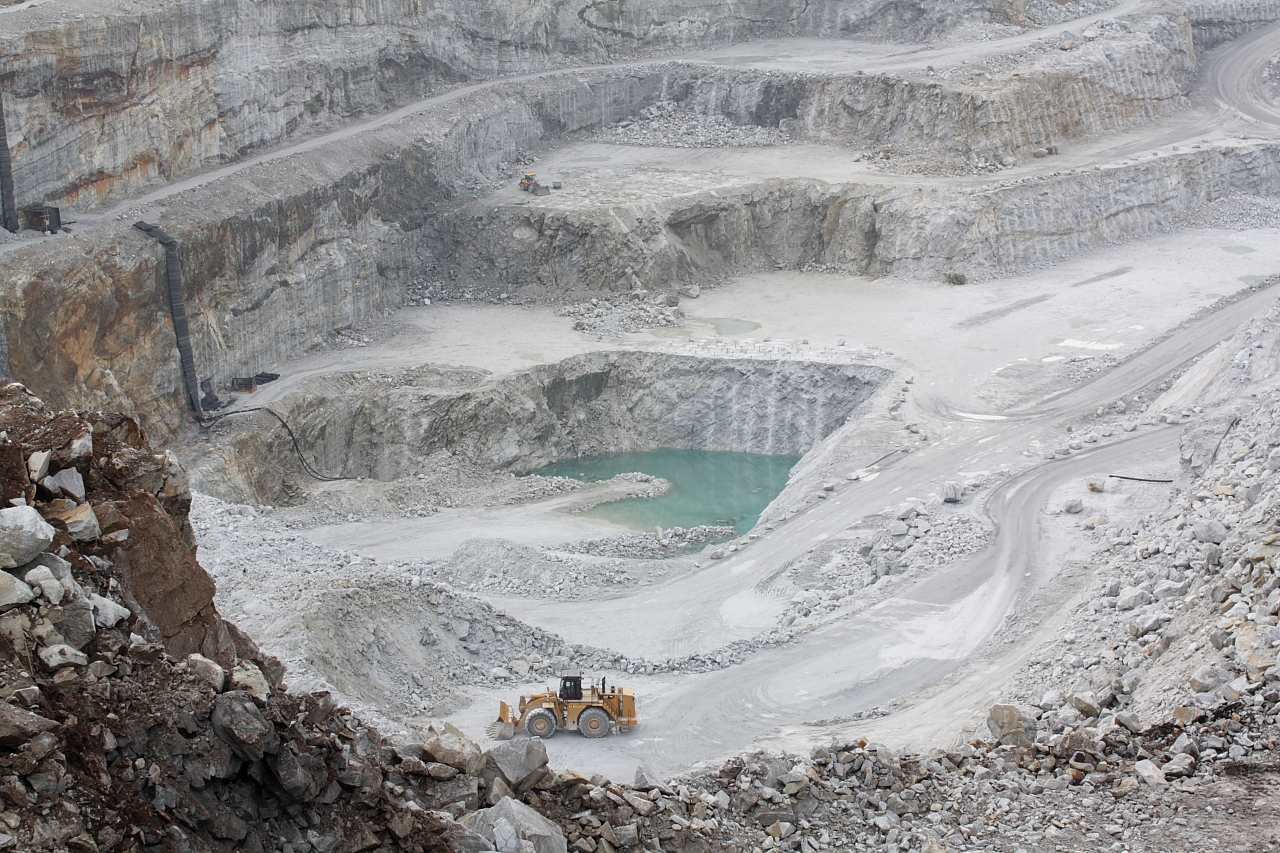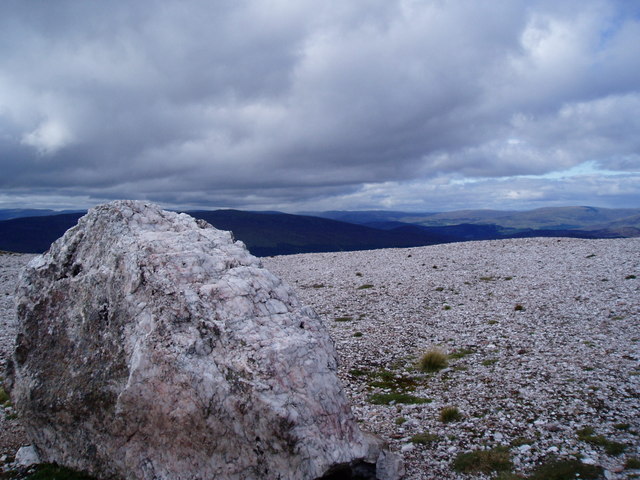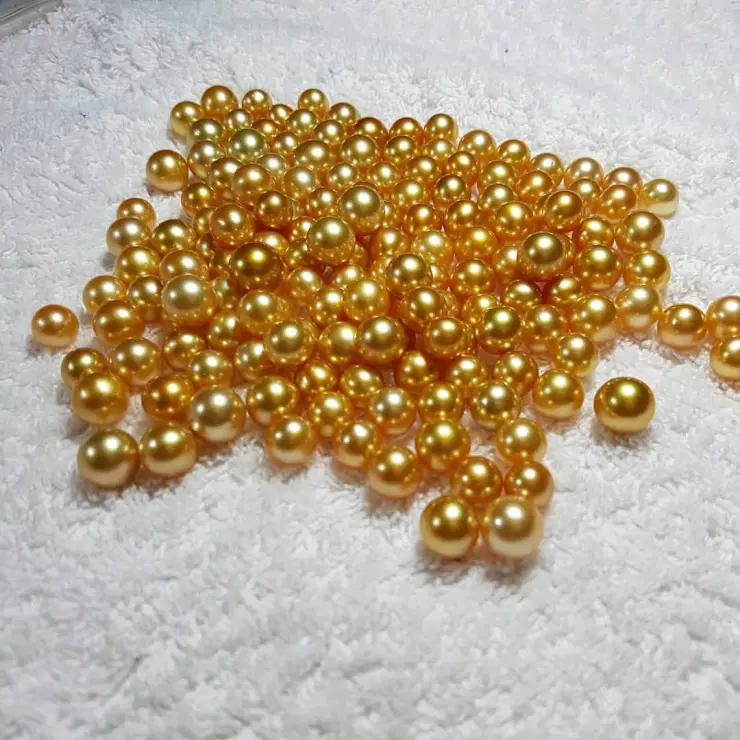Creating a Colourful Landscape
Here is a range of the most colourful rocks and minerals that occur in the real world, that can plausibly occur in high enough quantities that they produce rich colour - on an Earth-like planet.
I've included one picture for each rock of a cave, quarry, or mine so that you can see what it looks like from a distance, and in its natural state. Wherever that isn't possible I have included a close-up picture.
About Your Overall World
If you decide to work on the geology of your world, here's a few notes that you may find helpful.
Hydrothermal Activity
Many of the rocks listed below are formed as a result of hydrothermal activity. Hydrothermal activity is any activity where hot water or steam occur underground. This may or may not appear above ground as hot springs or geysers.
Hydrothermal activity occurs when rain and melted snow sink into the ground until they reach solid rock and can't sink any further. It pools there until magma heats this water, which then rises up through the surface through cracks in your planet's crust.
Vents (sometimes called fissures) are caused by earthquakes and and occur near volcanoes. Earthquakes and volcanoes occur near the edges of tectonic plates, and if you'd like to know more about how to create those, here's a great guide!
Quartz
If you want a variety of colours in your landscapes, quartz is your friend. It has a habit of showing up on the surface of real-life landscapes due to its durability: when it is formed with other rocks, those rocks tend to be worn away faster, leaving behind just the quartz. It's also made from materials found commonly on Earth, so is common enough itself that entire quarries of quartz can be found. Quartz has a tendency to develop in a variety of colours, depending on the impurities found in the area.
Now onto the colourful rocks!
Red
Red rocks are common in geology. This is often due to the presence of iron on Earth. Iron is easy to produce (in our universe, at least) in supernova nuclearsynthesis, so lots of it came into existence during the earliest millennia of the universe, and iron oxidises - or rusts - easily.
If you want red soil or rocks, then you'll probably need your planet to have both iron and oxygen. Oxygen is a byproduct from cyanobacteria, or blue-green algae, so you'll need to have had that on your world for a while, in order to produce enough oxygen for the iron present to rust (and make its way into the rock/soils you've chosen).
Cinnabar
Red cinnabar is a bright red mineral.
Where and how it forms: Around areas of recent volcanic activity and hot springs.
Appearance: It usually appears as a coating on rock surfaces and in fractures, and can show up either as a red rock (as shown in the picture), or as clear red crystals.
Other details: Cinnabar is mercury ore. Due to its mercury content, it is poisonous. Mercury poisoning causes muscle weakness, poor coordination, and numbness in the hands and feet. Longer-term exposure is ultimately lethal.
Coral
Coral is a marine organism. While it looks like a plant, it is technically part of the Animal Kingdom. Its skeleton has a red/reddish pink colour and is harvested for use in jewellery. Coral is naturally matte and quite soft - it scratches easily.
Where and how it forms: Coral grows under the sea in dark environments, and prefers warmer waters - typically temperate or warmer climates. It favours coastal areas around islands and continents.
Appearance: Real-world coral grows in branches and is a rich red. The coral shown here is red due to pigments present in microscopic plants that the coral has a symbiotic relationship with, and live within its body. Coral turns white if introduced to a more acid PH than it's used to.
Coral has potential to lend a great deal of colour to a fantasy landscape. Bear in mind that you can experiment with the appearances of the corals that appear in your world. Coral's a living organism!
In addition to this, the shift of the tectonic plates of your world can make a plausible story for how coral may appear on dry land, rather than in the sea where it grew.
Red Jasper
Jasper is closely related to quartz and, like quartz, is very common.
Where and how it forms: By volcanic ash and other sedimentary material becoming cemented together by silica.
Appearance: Red jasper is a rusty red, often banded with paler red and cream stripes.
For a list of more red rocks and stones, see Gemselect.com.
Orange
There aren't very many orange options, but if you're relatively easy-going about the shade you're after then one or two of the red options may work well for you.
Amber
See the Amber entry under Yellow.
Orange Coral
See the Coral entry under Red.
Ultisol
In some parts of the world, including Africa, from Kenya down to South Africa, parts of the Southern United States, and Australia, the soil is a rich, earthy red. Soil of this type is referred to as 'ultisol'.
Where and how it forms: The redness of the soil is caused by particles of iron, which occurs commonly on Earth, which becomes oxidised - or rusted.
Appearance: Orangey-red.
Other details: Ultisol is quite acidic so not ideal for growing crops in, so depending on how you want to use it in your world you may want to take this into account.
For more orange stones see Gemselect.com.
Yellow
Amber
Amber is fossilised resin from prehistoric trees.
Where and how it forms: Trees produce resin to protect themselves from injury. Over the years it fossilizes and is left behind when the tree rots away. This is what we call amber. Note, amber is resin and not sap.
Appearance: Amber generally shows up in small pebbles or stones in coastal areas. Its colour can be anything from a pale yellow to brown.
Other details: Amber can be melted! It has a melting point of 250–300°C, so it's possible to melt multiple pieces together (this also tends to change some of its properties, including its scent, which can be like turpentine; its clarity, and its colour. This is also a good way to remove any grit or other impurities in the amber and make it purer.
Note that on Earth, the highest surface temperature ever recorded was in the Sahara Desert, at 136°F. This translates to just under 58°C - nowhere near enough to melt amber, so if you want to make a whole, melted-together amber environment, you would need to incorporate a very high heat source.
Citrine
Citrine is yellow quartz.
Where and How it Forms: Within igneous rocks or other areas of hydrothermal activity.
Appearance: Citrine is quartz containing particles of iron. Generally iron in quartz produces amethyst or smoky quartz, and it's only heat that prompts the purple or grey to turn yellow. For this reason, natural citrine is rare, and citrine seen in gem stores is normally heat-treated.
Yellow Fluorite
The yellow form of fluorite.
Where and How it Forms: Like many minerals, fluorite is formed near to hydrothermal processes such as in volcanic areas, or deep within the planet's crust (which, for the purposes of creating a landscape rich in fluorite, may later be pushed to the surface by volcanic or tectonic activity). There is little information online as to why fluorite can be yellow, so all I can tell you is that it's the result of impurities and radiation. My best guess would be a small amount of iron, which oxidises to form rust.
Appearance: To give you a good idea of how fluorite forms in the field, here is a short video showcasing purple fluorite (watch from 1:20). However, this demonstrates how it can form into a layer of short, pointed crystals. You may or may not want this to be present on the ground in your landscape, as it would clearly be awful to have to walk on!
Other details: Fluorite of all colours is fluorescent under ultraviolet light!
Yellow Jasper
Jasper is closely related to quartz (see above) and, like quartz, is common. See Red Jasper entry for further information.
Where and How it Forms: Its yellow colour is due to trace amounts of iron.
Appearance: Dull yellow in its natural environment. Polished jasper is a much richer colour, but the circumstances that provide polished stones are unlikely to occur in the wild - polished stones are normally washed in soapy water and brushed clean, ground with a rotary tool, then sanded and polished.
For more yellow stones see Gemselect.com
Green
A wide range of green and blue rocks are available, mainly thanks to the presence of copper oxide in an Earth-like environment. Copper often rises to the upper crust of the planet as a result of volcanic activity and remains beneath the surface, ready to react with other elements - see each entry for more information. Oxygen, as stated above, needs to come from plants, so any world with oxides of any type must at least have had algae at some point.
Green Fluorite
The green form of fluorite, which is colourless in its pure form.
Where and How it Forms: See Yellow fluorite for more information. There is little to no information available on why fluorite turns green specifically beyond the presence of impurities and/or exposure to radiation. However, green fluorite is much more common than yellow.
Appearance: Green fluorite has a minty-green colour.
Other details: Fluorite glows under ultraviolet light.
Malachite
A rich green mineral that often occurs with azurite, chrysocolla, and turquoise.
Where and How it forms: Malachite is formed wherever copper interacts with limestone, or whenever carbonate interacts with copper minerals.
Appearance: Dark green, and often forms round bumps, which makes it easy to distinguish from its 'sister' minerals. The picture for this section is a handful of rough malachite pieces, but if you want to see how malachite appears in the field, see this video on Youtube from 3:40.
Green Amazonite
Despite its name, 'green' amazonite is almost blue; it has an aqua-like colour and occurs in large enough quantities that landscapes would likely have entire, concentrated patches of it.
Where and How it Forms: Like many minerals it forms in hydrothermal veins. It is formed in deep-sea igneous rocks that once cooled very slowly. Therefore, it's most likely to occur in areas that have, or once had, a lot of hot springs.
Appearance: An ice-blue rock that can form large segments of a rock-face.
Jade
Jade is a deep green mineral. However, it does need to be recently broken to get to the good colour and that's less likely to happen in a natural landscape. Old rocks will look brown with a very slight green tinge.
Where and How it Forms: By heat and pressure along the edges of tectonic plate boundaries.
Appearance: Deep green translucent rock. Be warned: it doesn't show up as particularly green on the surface, and needs to be broken up to show the most intense colour.
To look at more options, see Gemselect.com.
Blue
Azurite
Azurite is a royal blue colour and forms on copper. It is often found near malachite which is an equally rich green, and the two often show up in the same chunk of rock, marbled together.
How it forms: It appears in similar places to malachite and under similar circumstances, and like malachite, is formed of a mixture of copper and carbonate. The two will often appear as a patchwork. It's not particularly common.
Appearance: Very bright mid-blue.
Beryl
A mineral that occurs as coloured rock and as crystals. Note that beryl dust can make people ill if they breathe it in, so an environment containing large quantities of beryl may be dangerous to the animals and intelligent life living there.
Where and How it Forms: Often found in metamorphic rocks - rocks subjected to high heat and pressure, so most beryl will occur wherever there is, or once was, volcanic activity. Beryl crystalises under low pressure.
Appearance: Beryl occurs in a variety of colours. However, is usually a pale greenish-blue and occurs in large enough quantities that its colour could be visible from a distance. It also tends to be translucent if it grows in pure enough form.
Blue Quartz
This quartz is a sky-blue colour and contains Riebeckite. It is therefore possible to have blue crystals, if you're looking for an alternative to the rocks that make up most of this section.
Chrysocolla
A blue mineral related to copper, with an affinity for malachite, azurite, and turquoise. Creates a vivid blue colour.
Where and How it forms: Wherever there are large copper deposits. Often found in the same places as malachite, azurite, and turquoise. Unlike turquoise however, chrysocolla is copper silicate.
Appearance: Vibrant blue rock that looks a lot like turquoise.
Blue Soil
Copper has a tendency to turn green or blue over time; the Statue of Liberty is an excellent example of that process happening on the surface of a copper statue. The same is just as true for tiny fragments of copper in the soil. Not only is this theoretically possible to have blue soil, but it occurs in real life!
Lapis Lazuli
A blue mineral with excellent potential for colourful landscapes.
Where and How it Forms: Lapis is the result of limestone heated by hydrothermal activity. It can be found inside crystalised limestone and marble.
Appearance: Most lapis is thinly interdispersed into rocks, so usually shows up as a dull blue tinge within grey rocks. However, pure polished lapis is one of the most vivid blue stones available.
Sodalite
Another deep blue mineral that occurs in such a way that quarries of it are brightly-coloured from a distance.
Where and How it Forms: Wherever there is no or little silica. The 'soda' in sodalite refers to its sodium content. Sodium itself rarely occurs in its pure form in nature, and much of it has ended up in the ocean, hence its salty taste.
Appearance: Very blue! It might need to be sheared to get the best blue, but if you can do that then you'll get a vibrant electric blue rock-face.
Turquoise
Another blue rock that tends to form in the same locations as malachite, azurite, and chrysocolla.
Where and How it Forms: Turquoise forms in much the same way as the other three minerals: water courses through rocks that contain a large amount of copper or aluminium, which settles into seams and forms turquoise. Turquoise is formed from copper and phosphate.
Appearance: Turquoise is a brighter, slightly green-tinged blue than the other three minerals. Watch this Youtube video to see the discovery of a turquoise-rich location (skip to 3:15 if you wish).
In case you want any more options, see Gemselect.com
Purple
Amethyst
The most famous purple crystal is also reasonably common, as minerals go!
Where and How it Forms: It forms in volcanic areas, and irradiation plus trace impurities account for the purple colour. See the Quartz section near the top of this article for more information about how quartz forms.
Appearance: Amethyst is purple quartz and can be anything from vivid purple to dull lavender. Like all quartzes, its purest form is crystals, which might be difficult for your fauna to walk on, but it does tend to form in patches rather than complete carpets.
For other options, see Gemselect.com
Pink
Rose Quartz
See above for further information about quartz.
Where and How it Forms: Rose quartz can occur in large enough quantities that entire quarries are dedicated to mining it, so it can certain appear in a fantasy landscape. The pink is due to trace amounts in the rock of titanium, iron, or manganese. With iron being so common, at least on Earth, it is inevitable that a certain amount will become interspersed in the also-common quartz.
Appearance: A delicate pink. Watch this Youtube clip of rose quartz being found in the wild. Skip to 1:55 if you're in a rush.
Pink Coral
Tiny, broken pieces of coral and shells can wash up on beaches to produce pink beaches.
See the entry for coral under Red for more information.
Pink Nacre/Pearl
Pink pearls are not usually a rich pink, but queen conches can have a richer colour. Their shells, if enough are broken up and washed ashore, can create pink sand (see above, under Pink Coral.
Where and How it Forms: Pearls are made of a substance called nacre, which you can read about in the Rainbow section under Nacre / Mother of Pearl. While abalones (mentioned under Rainbow) and queen conches (pictured here) coat the insides of their shells, oysters coat the irritant, to create a pearl that may or may not adhere to the inside of the shell.
Appearance: The nacre inside queen conch shells creates a fairly bold pink. Watch this Youtube clip to see pink nacre in the wild.
To see more options for pink stones and minerals, see Gemselect.com
Rainbow
Nacre / Mother of Pearl
Nacre, or iridescent mother of pearl, is seen on the insides of abalone shells.
Where and How it Forms: Nacre is a protective substance secreted by abalone to protect themselves from parasites and debris by trapping the offending object in the nacre. The nacre solidifies into a hard, smooth surface and remains stuck to the abalone's inner shell as a layer.
Appearance: Iridescent, mostly green and blue.
Opal
Opal occurs in seams within a variety of rock types. In the real world it is mined mainly in Australia, Ethiopia, and Mexico. Watch this Youtube clip to see opal being discovered in a mine, from 3:15.
Where and How it Forms: It forms when water filters down through the soil, picks up silicon dioxide on the way, and then comes to rest when it hits something harder. Opal generally doesn't form into entire landscapes, but rather into seams of pure opal.
Appearance: Opal can be anything from fairly clear to opaque, and pale to dark, but all opal has flecks of rainbow colours throughout.
For more options, see Gemselect.com.
Black
Obsidian
Common enough to lend a black tone to entire quarries in which it is mined, obsidian is a naturally occurring black glass.
Where and How it Forms: It is made from lava with a high silica content, which cools rapidly to create a glass. It is found near volcanic areas.
Appearance: Very dark, black, and glassy. Shards of it can be very sharp indeed.
Obsidian can easily show in large quantities above the ground, but an obsidian-rich environment won't look particularly dark during a bright day because it doesn't absorb that light from that distance particularly effectively. This might seem like an obvious point to make, but it's worth mentioning if you're looking to make a bleak environment. It does tend to show above ground quite easily, so a landscape of obsidian is plausible.
For more options, see Gemselect.com
White
White landscapes promise to be rather beautiful, but if you don't want to use good old-fashioned snow, here are some other options.
Limestone
Creates strikingly white landscapes from a distance.
Where and How it Forms: Limestone is made of the bodies of dead molluscs, corals, and other marine organisms, which came to rest on the sea bed and became compressed together over time. Since it is made in a marine environment, look at your world's map for clues about where it could plausibly come from, given its history of tectonic activity.
The nature of limestone means that it's plausible to have very large expanses of pure limestone.
Appearance: Limestone and chalk, a type of limestone, are very pale white. The picture provided shows it in muted light but either of these materials in bright sunlight are quite literally brilliant!
Snow Quartz
Quartz can also come in an opaque, milky-white form.
Where and How it Forms: See the section at the top of this article about quartz in general and how it forms.
Appearance: Snow, or milky quartz is full of tiny bubbles of air or liquid. This gives it an opaque, white appearance.
For more options, see Gemselect.com
Gold
Gold Pearl
Pearl is made of nacre, which you can read about in Nacre / Mother of Pearl under Rainbow. Nacre comes in a variety of colours, including a warm gold. That, combined with pearl's lustre, will make for a beautiful landscape if you can create a backstory to explain the huge quantities needed.
Where and How They Form: Different species of oysters produce different coloured pearls, and the species that produce these golden pearls on Earth dominate the oyster population of one particular location.
Appearance: Gold pearls can be anything from vaguely yellowish to a pinkish rose-gold.
Conclusion
I hope this article has proved helpful to you! If you want our help with the geology of your world then we will be more than happy. Contact us using the information in the footer of this article, and we look forward to hearing from you!
Credits
Title image of and by Overflo-Stock, and used with their kind permission.
